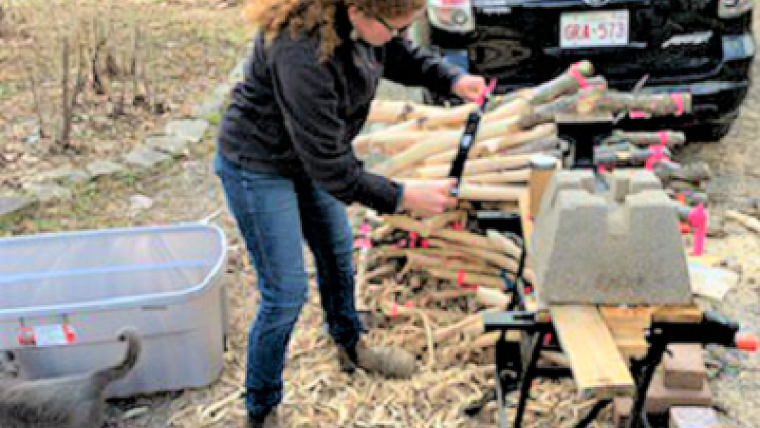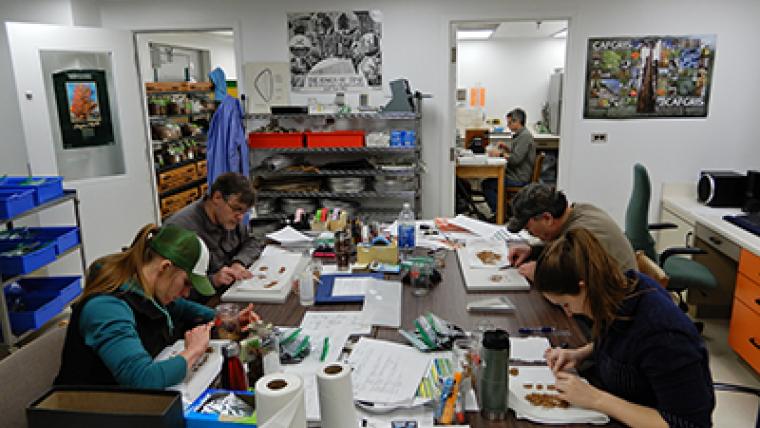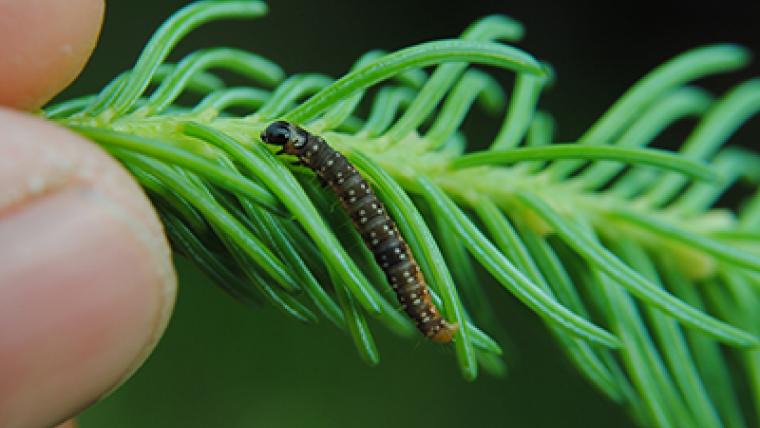Exploring the fungal frontier: Mycology’s role in preserving forest health in Canada
Research in mycology and forest pathology protects our forests in a changing climate
October 2024
by Madison VanCamp
When Canadian Forest Service (CFS) researcher Joey Tanney tells people he’s a mycologist, most people only think of mushrooms. But there’s more to mycology than mushrooms. Spotting a mushroom in a forest is like spotting the tip of the iceberg, as they make up just a fraction of the fungal species.
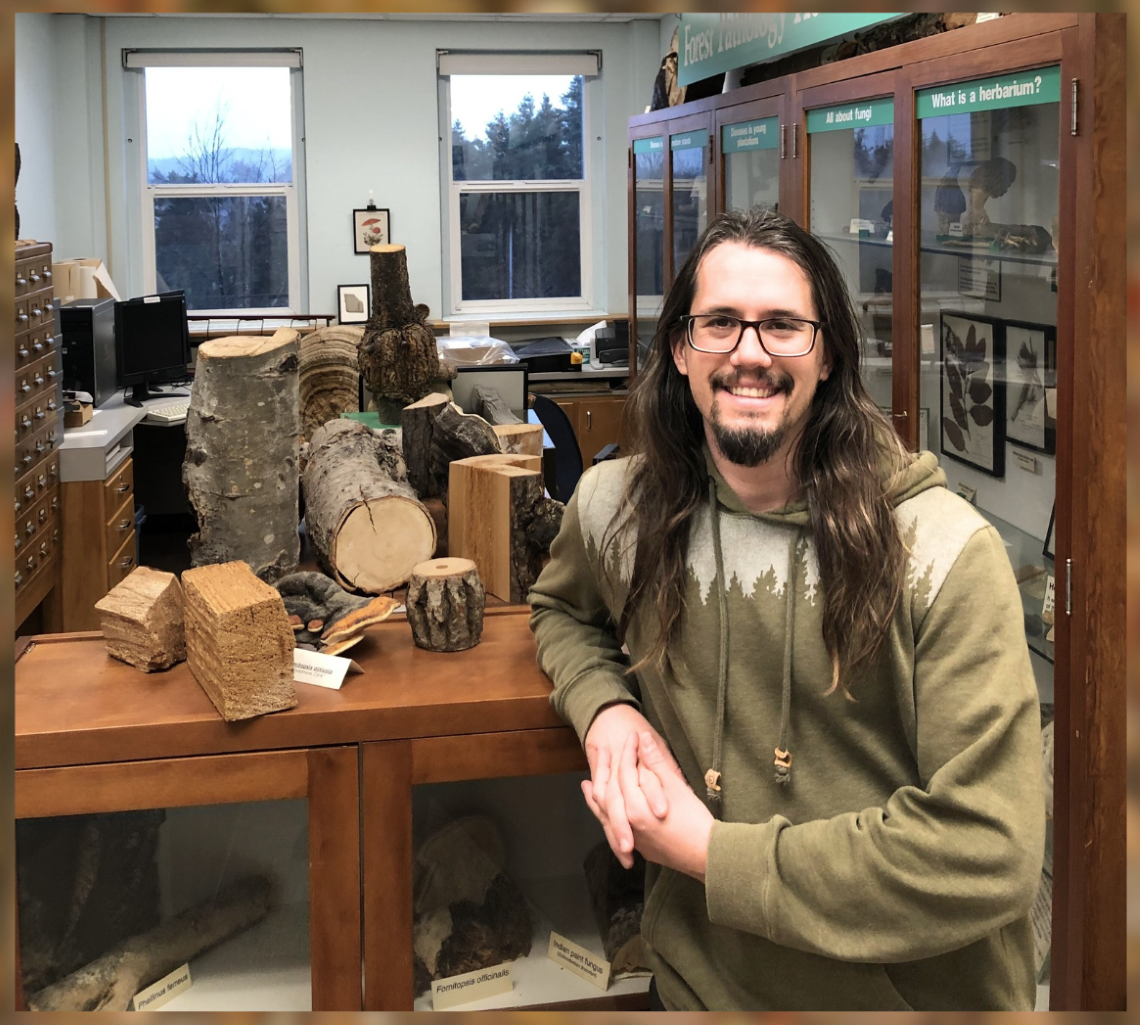
CFS researcher Joey Tanney in the Pacific forestry Centre herbarium.
“I think one thing that surprises people is that fungi are more closely related to animals than plants,” says Joey. “With fungi, there’s anywhere from two and a half to five million species.” Of those, only about 150,000 species are named and known.
Scientists at Natural Resources Canada has spent over a century researching the roles that many fungi play in Canadian forests and cataloguing these species. The CFS has collected and cataloged much of this work in its two herbariums, one in the Pacific Forestry Centre (PFC) curated by Joey and another in the Laurentian Forestry Centre. They currently contain more than 35,300 and 25,000 fungi specimens respectively.
And these collections are constantly growing, with specimens added by CFS staff and other collaborators, such as the Laurentian Forestry Centre, various Canadian research and development centres, and universities throughout North America.
The role of fungi and the science of mycology
Mycology may seem like an obscure field to many, but fungi are all around us and interact with every aspect of our lives. From the production of blue jeans and chocolate to life-saving pharmaceuticals, to causing serious diseases and challenging the global food supply — fungi play a role in all of it.
“They have a very profound impact on humanity; they always have, and they always will,” says Joey.
Fungi also play an important role in maintaining the health and biodiversity of our forests. Joey is a generalist on all fungi, and his current projects focus on different species of pathogenic and beneficial fungi and how they impact tree health.
One of Joey’s projects is the investigation of sooty bark disease, which usually appears after severe drought or heat waves. It first appeared on the West Coast in 2020 a year after the “heat dome” in 2019 produced temperatures above 40°C in British Columbia. While it’s uncertain whether the disease was introduced or is native to the West Coast of Canada, it has been found on sycamore and Norway maples and can kill a tree within months of the first symptoms.
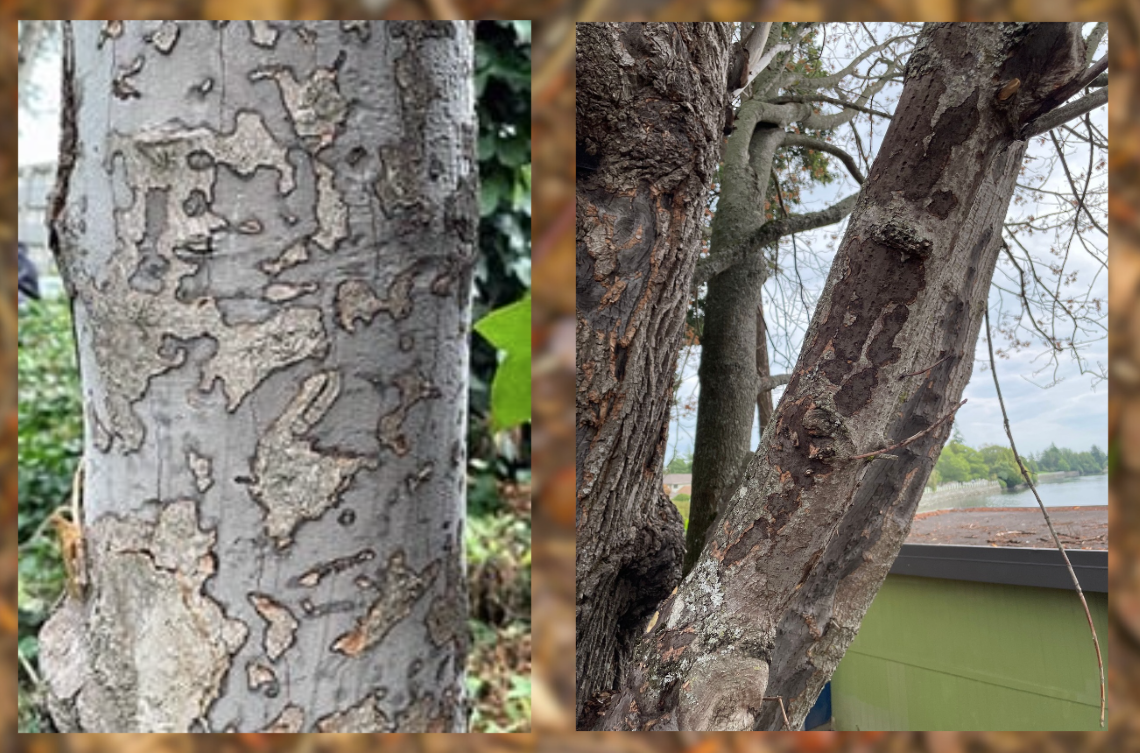
Tree trunks affected by sooty bark disease.
More cases appear each year. This year marks the first time it has been seen on native bigleaf maple trees, which is a concern for researchers due to both the novelty of the disease and the uncertainty on how severe, widespread and significant it may prove to be. Joey and his team are currently working to produce diagnostic tests and collaborating with international researchers to learn more about the fungus and how they can respond to it.
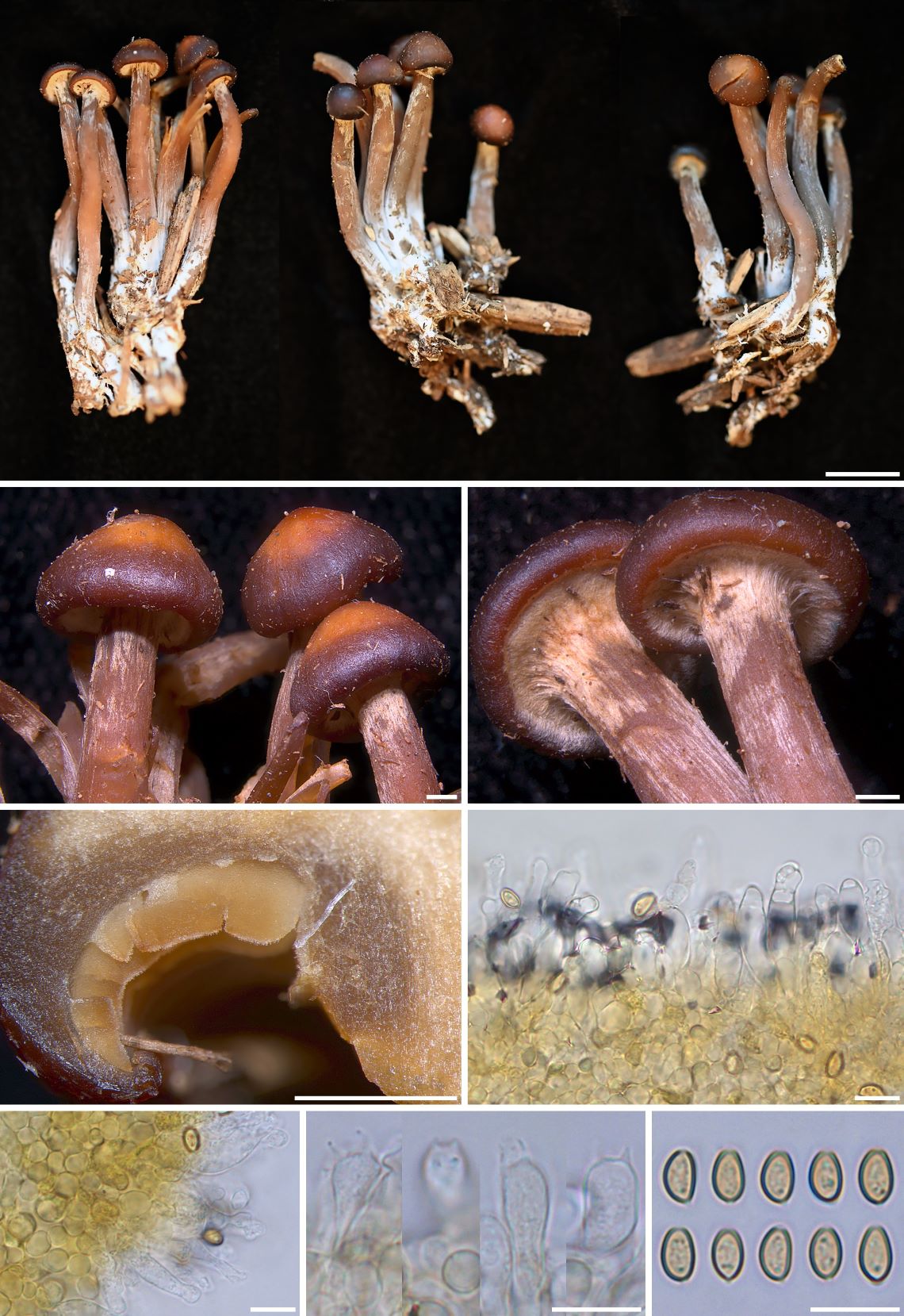
Photos and microscope images of the Kuehneromyces lignicola mushroom.
Mitigating fungal threats
Joey is also researching another native disease that’s emerging due to climate change: Swiss needle cast, which impacts Douglas-fir trees. Rather than killing the trees, this disease severely reduces their volume growth, which is a large concern for the forestry industry as this will greatly impact yields.
Joey has begun exploring treatments for this disease using beneficial fungi called endophytes, which researchers believe have the potential to be a powerful tool for fighting forest diseases.
Endophytes can be compared to the beneficial microbiomes found in humans. They’re fungi that live in plants that don’t harm them but rather play a key role in their health. To combat Swiss needle cast, Joey is looking at endophytes living within the needles of Douglas-fir trees. So far, dozens of endophyte species have been identified and thousands of cultures have been isolated from them.
Working with a chemist at Carleton University in Ottawa, Joey is exploring how these endophytes could combat the fungus that causes Swiss needle cast. Endophytes living in healthy needles can produce antifungal compounds that inhibit the growth of the needle cast fungus. So Joey and his team are inoculating Douglas-fir seedlings in a greenhouse with one endophyte species.
“The idea is to try and reinoculate these fungi into trees and then see how they impact the progression of Swiss needle cast disease,” says Joey. “We’re using our native fungi to help fight a climate change–associated disease.”
In the process, Joey and his team are discovering many new species of endophytes and exploring their potential uses to fight forest diseases.
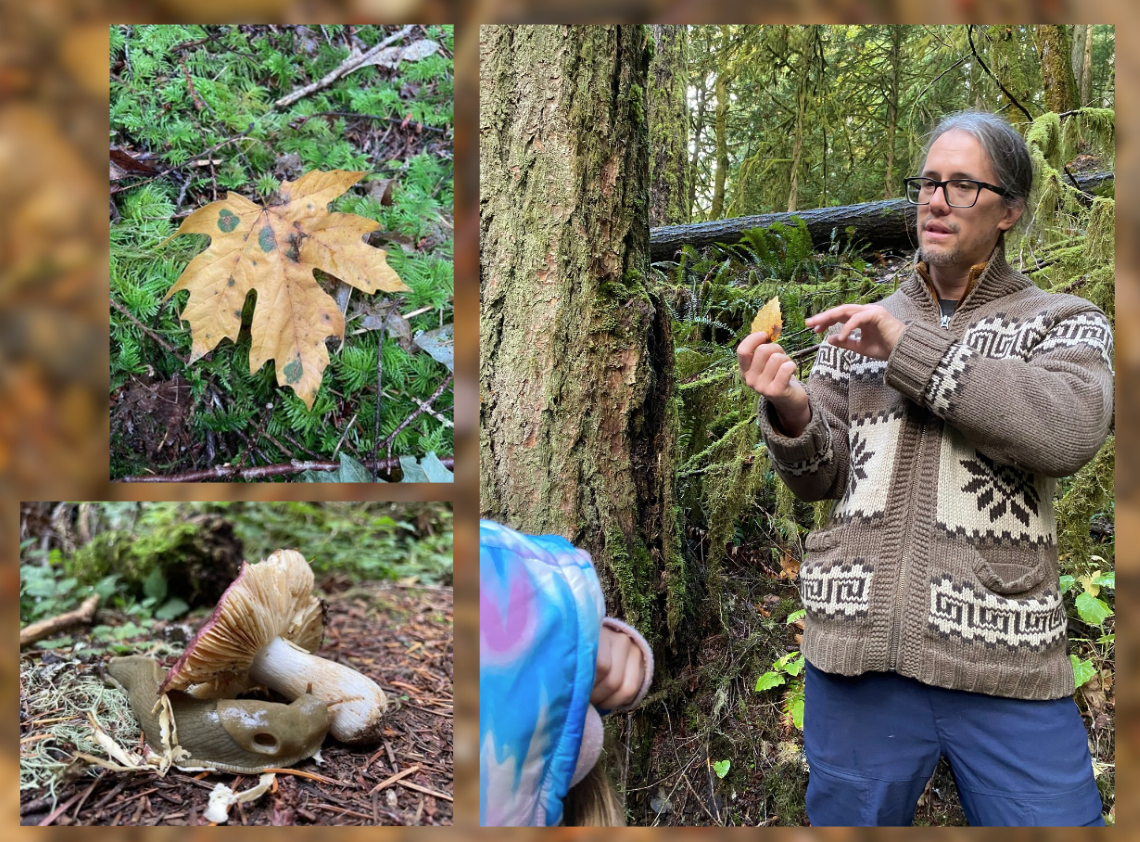
Joey can always find something new and captivating to study in the forest.
“It’s exciting to be going out and finding new species, but there are more new species than there are mycologists, and only so many can be identified,” says Joey. “I could go out and grab a handful of soil, and if you gave me a few days, I could probably find new species — I’m finding new species all the time in our forests.”
The legacy and preservation of mycology
The study of forest pathology will grow more important as we see the effects of a changing climate on our forests. Warmer winters, wetter springs and drier summers are causing diseases we’ve never seen before. Joey hopes to see this importance translated into support for the field as mycologists continue to work on building the taxonomy of fungi and their uses as new species are identified.
“If we don't support these fields, we can't just snap our fingers and have this knowledge and experience available when it’s required — we need to maintain a thread of continuity,” says Joey. “We can serve the public with this knowledge: these fungi are important for our forest health, industry and trade.”
As the Canadian Forest Service celebrates its 125th anniversary, the occasion holds real meaning in practical terms for researchers like Joey whose work on forest pathology in the herbarium, the lab and the field builds on the decades of knowledge collected and passed down by his predecessors.
Explore:
Read more about Joey Tanney’s research on ResearchGate
Page details
- Date modified:
